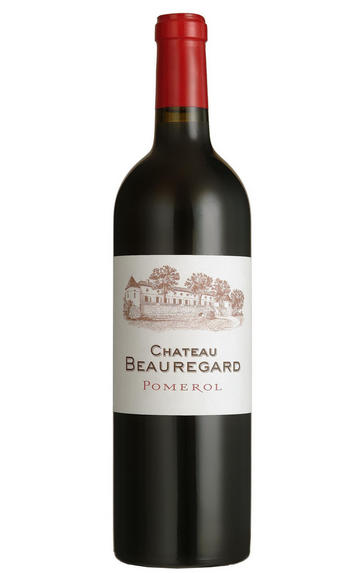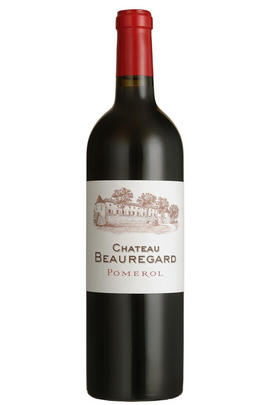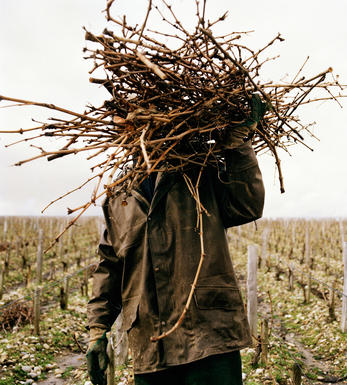
2005 Château Beauregard, Pomerol, Bordeaux

Critics reviews
Robert M. Parker, Jr. - 29/06/2015
About this WINE

Chateau Beauregard
Château Beauregard is one of the few Pomerol properties to actually have a château, a distinctive and classic 18th century building that was designed by a pupil of Victor Louis. Beauregard has had several owners and in 1991 it was acquired by Crédit Foncière, which also owns Château Bastor-Lamontagne in Sauternes.
Beauregard is located just outside the village of Catusseau, opposite Château Petit-Village. Its 17 hectares of vineyard are planted on soils rich in gravel - consequently, the wine has a higher proportion of Cabernet grapes (Cabernet Franc 35%, Cabernet Sauvignon 5%) in its blend than most Pomerols.
The grapes are fermented in temperature-controlled, stainless steel vats and the wine is matured in oak casks (70% new) for 18 months. Quality at Beauregard has improved significantly since 1991 and winemaker Vincent Priou is now producing finely crafted and supremely elegant clarets.

St Émilion
St Émilion is one of Bordeaux's largest producing appellations, producing more wine than Listrac, Moulis, St Estèphe, Pauillac, St Julien and Margaux put together. St Emilion has been producing wine for longer than the Médoc but its lack of accessibility to Bordeaux's port and market-restricted exports to mainland Europe meant the region initially did not enjoy the commercial success that funded the great châteaux of the Left Bank.
St Émilion itself is the prettiest of Bordeaux's wine towns, perched on top of the steep limestone slopes upon which many of the region's finest vineyards are situated. However, more than half of the appellation's vineyards lie on the plain between the town and the Dordogne River on sandy, alluvial soils with a sprinkling of gravel.
Further diversity is added by a small, complex gravel bed to the north-east of the region on the border with Pomerol. Atypically for St Émilion, this allows Cabernet Franc and, to a lesser extent, Cabernet Sauvignon to prosper and defines the personality of the great wines such as Ch. Cheval Blanc.
In the early 1990s there was an explosion of experimentation and evolution, leading to the rise of the garagistes, producers of deeply-concentrated wines made in very small quantities and offered at high prices. The appellation is also surrounded by four satellite appellations, Montagne, Lussac, Puisseguin and St. Georges, which enjoy a family similarity but not the complexity of the best wines.
St Émilion was first officially classified in 1954, and is the most meritocratic classification system in Bordeaux, as it is regularly amended. The most recent revision of the classification was in 2012

Merlot/Cabernet Franc
Merlot and Cabernet Franc are grape varieties commonly used in Bordeaux-style blends, particularly in the Bordeaux region of France. When these two grapes are blended, they can create a wine that combines the best characteristics of each variety.
Merlot is known for its smoothness, soft tannins, and ripe fruit flavours. It often contributes black cherry, plum, and chocolate flavours to the blend. The grapes are relatively easy to grow and ripen earlier than other Bordeaux varieties, making them versatile for blending.
Cabernet Franc, on the other hand, adds structure, depth, and complexity to the blend. It typically brings aromas of red fruits such as raspberry and strawberry, along with herbal notes like bell pepper and tobacco. These grapes have thinner skins and can be more challenging to cultivate, requiring specific growing conditions to reach their full potential.
When Merlot and Cabernet Franc are combined, the result is a well-balanced wine with various flavours and aromas. The blend often exhibits a Bordeaux wine's medium to full body, along with a smooth texture and moderate tannins. The specific flavour profile can vary depending on the proportions of each grape in the blend and the terroir and winemaking techniques employed.


Buying options
Add to wishlist
Description
Highly perfumed, rich, sumptious and sexy on the nose with that wonderful crushed raspberries and violets that Pomerol can show. Very silky tannins surround a really beautiful kernel of ripe and generous fruit.The Best Beauregard any of us can remember tasting.
wine at a glance
Delivery and quality guarantee